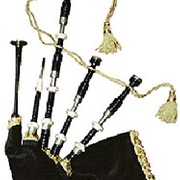

A chanter can be bored internally so that the inside walls are parallel (or "cylindrical") for its full length, or it can be bored in a conical shape. All bagpipes have at least one chanter some pipes have two chanters, particularly those in North Africa, in the Balkans, and in Southwest Asia. The chanter is the melody pipe, played with two hands. In the case of bags made from largely intact animal skins, the stocks are typically tied into the points where the limbs and the head joined the body of the whole animal, a construction technique common in Central Europe. Holes are then cut to accommodate the stocks.
#BAGPIPE PLAYER FOR PARTY IN HASTINGS MN SKIN#
However, synthetic bags carry risk of colonisation by fungal spores, and the associated danger of lung infection, because they require less cleaning than do bags made from natural substances.īags cut from larger materials are usually saddle-stitched with an extra strip folded over the seam and stitched (for skin bags) or glued (for synthetic bags) to reduce leaks. Some synthetic bags have zips that allow the player to fit a more effective moisture trap to the inside of the bag.

More recently, bags made of synthetic materials including Gore-Tex have become much more common. Materials used for bags vary widely, but the most common are the skins of local animals such as goats, dogs, sheep, and cows. The player keeps the bag inflated by blowing air into it through a blowpipe or by pumping air into it with a bellows. The bag is an airtight reservoir that holds air and regulates its flow via arm pressure, allowing the player to maintain continuous, even sound. Such pipes include the Irish uilleann pipes the border or Lowland pipes, Scottish smallpipes, Northumbrian smallpipes and pastoral pipes in Britain the musette de cour, the musette bechonnet and the cabrette in France and the Dudy, koziol bialy, and koziol czarny in Poland. In these pipes, sometimes called " cauld wind pipes," air is not heated or moistened by the player's breathing, so bellows-driven bagpipes can use more refined or delicate reeds. The use of a bellows to supply air is an innovation dating from the 16th or 17th century. In recent times, there are many instruments that assist in creating a clean air flow to the pipes and assist the collection of condensation. In some pipes the player must cover the tip of the blowpipe with their tongue while inhaling, but most blowpipes have a non-return valve that eliminates this need. The most common method of supplying air to the bag is through blowing into a blowpipe or blowstick. Many bagpipes have more than one drone (and, sometimes, more than one chanter) in various combinations, held in place in stocks-sockets that fasten the various pipes to the bag. A detail from a painting by Hieronymus Bosch showing two bagpipers (15th century).Ī set of bagpipes minimally consists of an air supply, a bag, a chanter, and usually at least one drone.


 0 kommentar(er)
0 kommentar(er)
